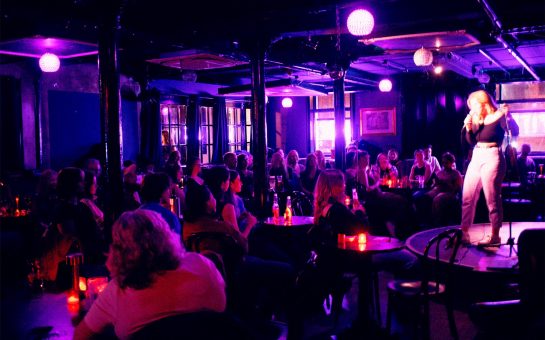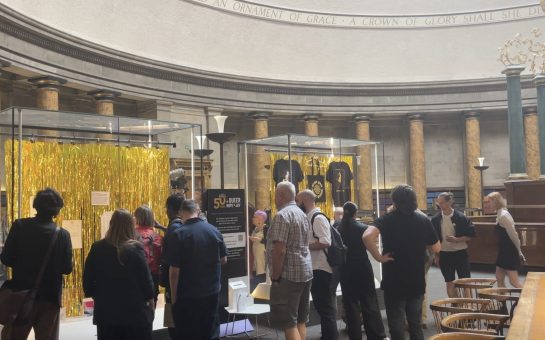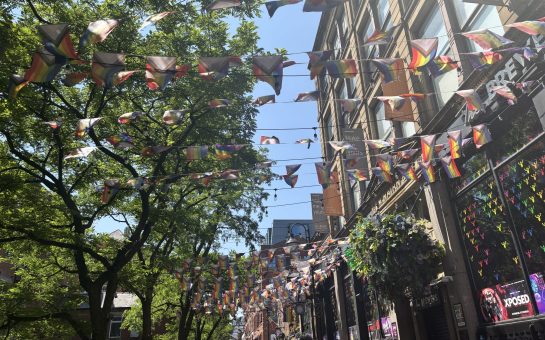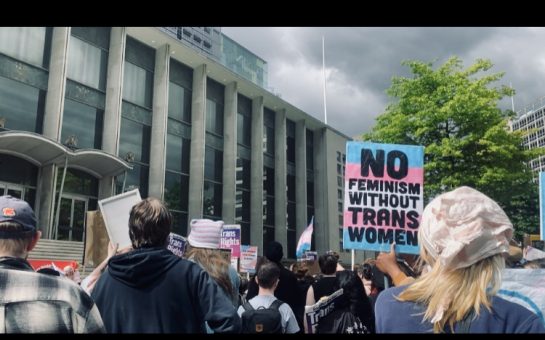For the first time since she moved to the city, Misty was invited to host a night in the Northern Quarter back in February.
She said: “The amount of gay customers has risen and many of them are choosing to take dates to the Northern Quarter.
“Perhaps it gives them a sense of being more ‘normal’ and therefore lends a seriousness to what they are hoping will be a new lasting relationship.”
Misty hosts ‘The Big Geek Quiz’ at Bar21 every Tuesday, but despite adding to her four Canal Street residencies with one outside of the village, she does not fear this will affect the community.
“Inevitably, the invisible elastic cord which attaches us all to Canal Street tightens with each drink consumed, and before long, they can be found bopping around G-A-Y,” she added.
This idea of an ‘invisible elastic cord’ towards Canal Street seems to be an important one – the area may be the heartbeat of the LGBT scene, but what’s to say the cord will not snap and cut the supply back to the street is cut off?
Iain Scott, who runs Canal Street online believes the future is still strong for the village and is clear on how they must battle the competition.
Iain, who is an instrumental figure around Canal Street, said: “Basically, venues in the village have got to continue to raise their game.
“A lot of this is cyclical, if you’ve been around for 20 years like I have, you see highs and lows and trends and phases but at the moment, it is coming out of one of those periods where perhaps things have been a little bit flat.
“There are hundreds of thousands, if not millions, being invested in over five locations. That says a lot to me.
“It says the vibrancy is still there. And that the best business is still there. And the people investing the money believe in the future in and around the village.”
One of the places Iain referring to is Taurus, which he founded 14 years ago, and is now being refurbished thanks to new investment, which in itself has changed in recent years.
While there was an influx of major breweries and multiple operators around 20 years ago, with a couple still operating, the ‘new money’ coming in is from independent operators.
And according to Iain, this provides freedom for decisions and allows for more influence, showing that ‘the people investing the money believe in the future in and around the village’.
It appears that the Canal Street community has long realised the bar must be raised if it is to continue playing the role of Manchester’s LGBT hub.
It is evidently striving not to be an area in decline, a word which was mentioned during MM’s interview with The Apprentice’s Sanjay Sood-Smith, and has since been elaborated on by Cheddar Gorgeous, a resident drag artist at Cha Cha Boudoir.
She said: “The word decline is really interesting. It suggests that there is some standard and the village has always been changing.
“Just prior to the public attention, the gay village was a red light district so it was full of gangsters, hookers and crime. Then the bright lights and the vibrancy came and it was pushed out there as this great tourist attraction.”
The public attention Canal Street received was predominantly down to the Queer as Folk documentary, which is now over 15 years old.
Times have certainly changed since then, but members of the LGBT community are adamant that the buzz surrounding the village will not die out.
And this is the attitude which will certainly keep Canal Street alive – the invisible elastic cord will never be cut so long as those close to the centre believe in its future.
Image courtesy of Tecmark, with thanks. Attribution 2.0 Generic (CC BY 2.0)



